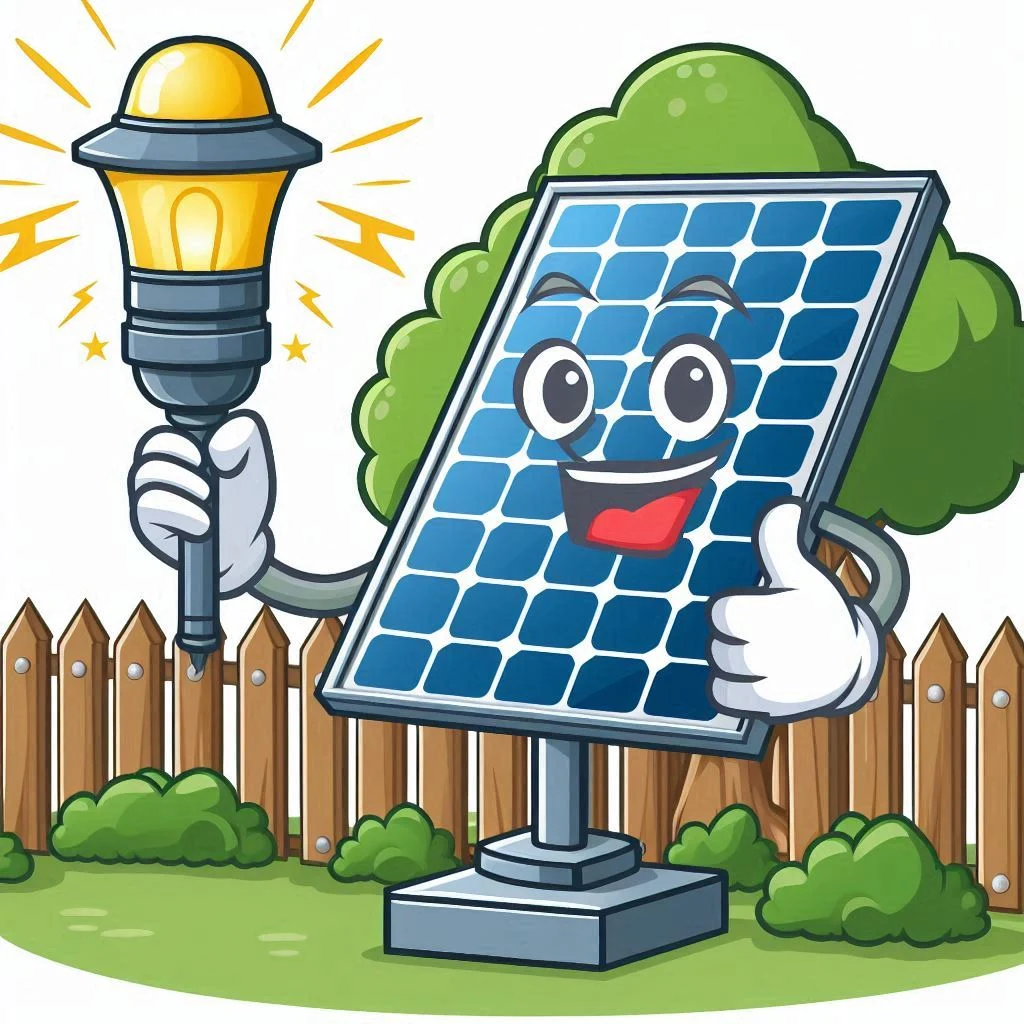Solar Powered Outdoor Lighting: Eco-Friendly and Cost-Effective Solutions
Photo Credit: Designer
Solar-powered outdoor lighting is one of the most practical
and eco-friendly solutions available today, offering significant cost savings
while reducing your carbon footprint. With the growing awareness of climate
change and the desire for sustainable living, more people are turning to solar
solutions to meet their energy needs. Solar-powered lighting for your outdoor
spaces, whether your garden, driveway, or terrace, reduces electricity bills
and adds aesthetic value to your property. This article explores how
solar-powered outdoor lighting can help you cut costs, with real-life examples
and data to show its effectiveness.
The first benefit of solar-powered outdoor lighting is that
it taps into an accessible and renewable energy resource in the sun. When using
solar energy, you do not need traditional electricity to keep your outdoor
lights lit. As the U.S. According to the Department of Energy, solar energy
reduces household electricity consumption by as much as 20%, and solar-powered
outdoor lights help in no small way. However, while the initial investment in
solar-powered lights may appear somewhat high, the cost savings over time
becomes quite clear, especially considering that these lights do not add one
dollar to your electric bill.
The cost of electricity keeps growing worldwide. For
instance, the average price of electricity in the United States is about 16
cents per kilowatt-hour; thus, a few hours of lighting every night adds up
fast. A standard 60-watt light bulb would use about 130 kWh in a year if it
were on for six hours daily. Solar-powered lights, however, use no grid energy,
and there are no costs related to electricity use whatsoever after
installation. This equates to considerable long-term savings, especially for
heavy outdoor lighting users like large gardens or extensive outdoor area
homeowners.
One of the leading causes of efficiency in solar-powered
outdoor lighting is the utilization of LED bulbs. LED lighting typically uses a
fraction of the wattage required by incandescent bulbs; combined with solar
technology, this makes them all the more efficient. LEDs use 80-90% less energy
than incandescent bulbs; therefore, when combined with solar-powered outdoor
lighting systems, the solution is very efficient and ecological. During the
day, the system charge will be released at night while the lights operate. Many
real users receive full night coverage with a few hours of sunlight.
For example, the Jones family resides in a suburban region
of California. The Joneses opted to replace conventional outdoor lights with
solar-powered lights. They bought ten solar-powered garden lights at around $40
each, totaling $400. While the costs were a bit higher compared to
conventionally purchased electric lights, the Jones family began to realize
savings within the first few months. They estimated that running their old electric
lights for five hours every night cost them about $150 annually. The new solar
lights brought that cost down to nothing. Eventually, they realized they would
recover the investment cost, placed upfront, in a mere three years, after which
they continued to save money year after year.
Another added advantage of outdoor lighting using solar
energy is that it requires less maintenance. Traditional outdoor lights require
a lot of regular maintenance, such as changing bulbs, repairing wires, and
finding and troubleshooting electrical problems. On the other hand, solar
lights are relatively low maintenance. Most modern solar-powered lights are
constructed to withstand everything from rain to snow and, thus, are durable.
Solar lights can last several years without needing replacement, provided their
lithium-ion batteries are of high quality. Some have reported that their solar
lighting lasted five years without significant issues, reducing ownership
costs.
Another real customer, Sarah, reports that winters are very
harsh in Minnesota, and snow is expected. Sarah claimed that she was skeptical
initially since winters usually have less sunlight, and she wondered how
solar-powered outdoor lighting would serve her region. However, she later
researched and chose higher-quality solar lights with better panels and was
quite surprised. She installed 12 solar-powered lights in her garden and
driveway. Despite the snow and short hours of daylight, the lights worked
fabulously, charging up enough during the day to last for many hours each
night. Indeed, she was able to send so many efficiently that she continued
adding more solar lights in her backyard, never resorting to electric outdoor
lighting at all.
One thing that should be noticed is how much of an
environmental impact using solar-powered outdoor lighting makes. Each household
that switches to solar decreases dependency on fossil fuels, which remain the
general source of electricity in most parts of the world. Solar lighting
contributes to lower greenhouse gas emissions and combats climate change. For
example, the EPA states that replacing ten traditional outdoor lights with ten
solar-powered lights can help a house reduce up to 500 kg of CO2 emission
annually.
In addition, solar outdoor lighting enhances your house's
energy efficiency rating. Most systems have a motion sensor and a timer to
ensure that lights come on only when necessary, further optimizing energy
application. Solar-powered motion sensor lighting is quite adequate for
security reasons since its lights turn on only when some movement is detected.
This saves energy and helps increase your house's security by deterring the
intruder's motive.
Another case where successful implementation has been done
is in Austin, Texas-Community Park. The park management decided to power
outdoor lighting with solar energy at the pathways, picnic areas, and parking
lots. The installation cost of the solar-powered lights was around $ 25,000.
While this is higher than the installation cost of traditional electric lights,
it means the park now saves approximately $5,000 yearly in reduced electricity
bills. That means that in just five years, the park will ultimately pay off the
cost of the solar lighting system, after which time all the savings benefit
their budget directly. At the same time, the community has praised the park for
being far more environmentally responsible.
Naturally, success with solar-powered outdoor lighting often
depends to a certain degree on the quality of the light sources and where the
solar panels are placed. Choosing lights with high-quality solar panels and
efficient battery storage will be essential to work reliably on cloudy days and
in areas with less direct sunlight. Another important factor concerning their
placement is that solar panels can be shaded by trees, buildings, or other
structures, decreasing the captured energy.
Different needs can be satisfied with various options, from
small ones hanging in gardens to powerful floodlights illuminating large areas.
Solar string lights are especially liked for their decoration and can be one of
the best ways to create a pleasant mood outdoors without increasing your energy
bills. Solar-powered floodlights will be ideal for large areas: driveways,
patios, or even an entrance-they can provide security and illumination during
the night.
As technologies evolve, the effectiveness and efficiency of
solar-powered outdoor lighting systems will increase. Models in the market
today are far superior to what existed a decade ago, with prices more
competitive. Also, for those skeptical and afraid to switch because of
perceived flaws in either reliability or performance, rest assured: solar
lighting technology has come a long way, and the benefits far outweigh the
initial investment. Many manufacturers even offer five-year warranties on some
of their solar lights.
In conclusion, Solar-powered outdoor lights are a worthy
investment for all who seek to save money, contribute less towards
environmental degradation, and bring convenience into their open spaces. In
addition to the savings on electricity bills, low maintenance, and long life
spans make solar lights an intelligent option for any homeowner or business
enterprise. Real-life examples, like the story of the Jones family and Sarah
from Minnesota, show how solar lighting can be adequate well in even the most
severe environments. Whether garden lighting, pathway illumination, or backyard
lighting, solar outdoor lighting is an environment-friendly and economically
viable option in the long run. At a time when solar technology is continuing to
advance, it is time to make that switch and be a part of all the benefits of
free, renewable energy.



